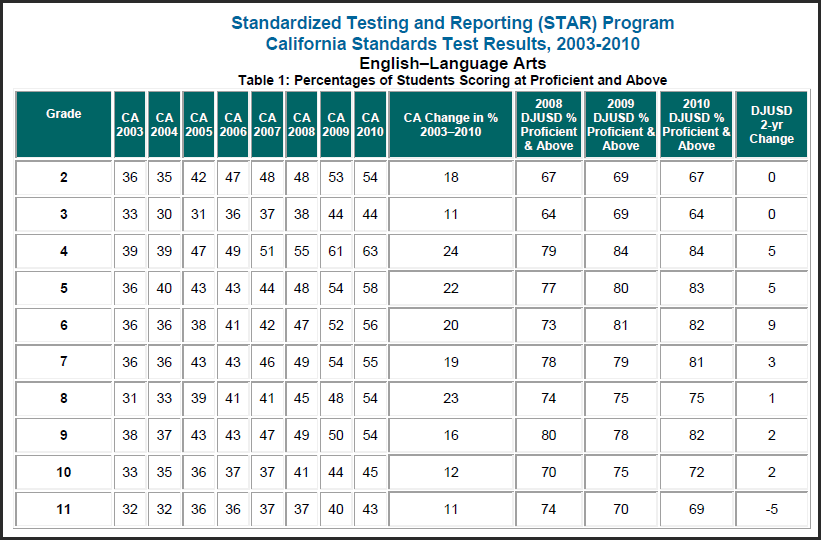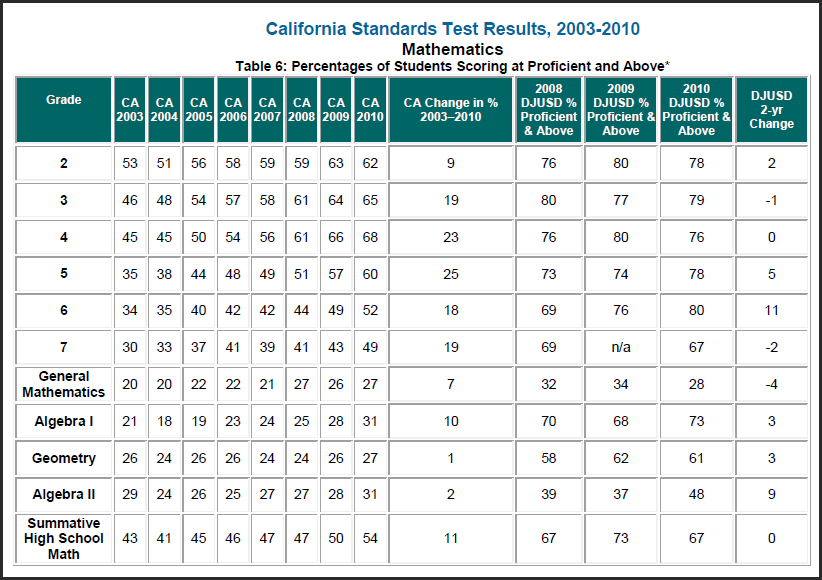 The good news is that most schools in the region are improving their test scores, according to API measures released on Monday. According to the Sacramento Bee, 45 of 59 school districts in the region (Sacramento, Placer, El Dorado, Yolo, and Yuba) improved their Academic Performance Index Scores.
The good news is that most schools in the region are improving their test scores, according to API measures released on Monday. According to the Sacramento Bee, 45 of 59 school districts in the region (Sacramento, Placer, El Dorado, Yolo, and Yuba) improved their Academic Performance Index Scores.
However, at the same time there is a 27 percent increase in the number of local schools that are failing academically, based on the federal standards Adequate Yearly Progress (AYP). 40 such schools fell into the category of program improvement, a designation that means that Title 1 schools failed to meet federal test score goals for two consecutive years. However, five schools that were in that category last year were able to show improvement and thus shed the PI status.
The Vanguard will have more on this later in the week.
Follow up on Achievement Gap
The biggest finding appears to be that in both English and Math the scores peak around fourth grade. That is a relatively stable finding across years as well, particularly in English. After fourth grade the scores seem to drop off, and continue to decline down to through high school.
The other feature is that across most years, the scores have increased over the time period. In English, the scores have improved the most across the years from fourth to eighth grade. In Math from third to seventh grade.
From my standpoint, it would be most interesting to see what happens when the scores are broken down by race and ethnicity. Are the achievement gaps shrinking or widening or are they stable?
More coming on this.
—David M. Greenwald reporting









Sacramento Bee article on the subject:
[url]http://www.sacbee.com/2010/09/14/3026937/capital-area-state-test-scores.html[/url]
Raw data from California Department of Education website:
[url]http://www.cde.ca.gov/ta/ac/ar/index.asp[/url]
source for Davis school API scores, shown above:
[url]http://api.cde.ca.gov/AcntRpt2010/2010GrthAPIDst.aspx?allcds=57-72678-5732201&c=R[/url]
The question came up in yesterday’s article as to when the achievement gap begins presenting itself, and whether we have the data by grade. I have the overall data by grade, but I do not have it broken down into grade level by race and socio-economic status. I have requested further data.
You could actually get the data for performance by ethnicity & grade level at DJUSD from the online database for STAR test scores:
[url]http://star.cde.ca.gov/[/url]
From Sac Bee article: “While we cannot be satisfied until the achievement gap is eliminated and all students are well-prepared for college and careers, this significant progress should be celebrated,” O’Connell said in a prepared statement.”
I hope by the statement “college and careers” O’Connell meant college or vo tech careers. He makes it sound as if he thinks all students should be prepared for college, which clearly is not achievable.
Here’s today’s Enterprise story on the subject:
[url]http://search.davisenterprise.com/display.php?id=69725[/url]
He makes it sound as if he thinks all students should be prepared for college, which clearly is not achievable.
In the South Bay/Silicon Valley, there’s a move afoot to make the A-G college prep course list used for getting into UC’s as the default curriculum for the school district. San Jose Unified and San Francisco Unified have both adopted A-G curriculum. That is not the case for DJUSD; as is typical of most places, they offer A-G curricula, but standards for graduation are lower than A-G.
I believe the logic here is that if you set the expectations high for everyone, you have a better chance that more students will be prepared for college. Perhaps to counter the “soft bigotry of low expectations”.
Foundations urge adopting A-G
[url]http://toped.svefoundation.org/2010/09/13/foundations-urge-adopting-a-g-for-all/[/url]
wdg1: “I believe the logic here is that if you set the expectations high for everyone, you have a better chance that more students will be prepared for college. Perhaps to counter the “soft bigotry of low expectations”.”
And you have more of a chance to to turn off those kids who are not capable of handling a college prep curriculum… and some kids are not capable of managing college prep coursework.
“I believe the logic here is that if you set the expectations high for everyone, you have a better chance that more students will be prepared for college.”
I believe that logic is incorrect. The result will be that a larger number of students will fail to graduate.
Eventually all schools will fail to meet the No Child Left Behind AYP so it should come as no surprise that although scores are up more schools fell behind their NCLB targets. A law that was designed by people who wanted to bust the teachers union and who didn’t believe in public education will eventually do that it left in place without being amended. Even in Davis we are beginning to see this come to pass.
Should read “do that if left in place”
Sorry
I agree in part Toad, although wasn’t NCLB written in part by Ted Kennedy?
Ted Kennedy took the lead in pushing NCLB through Congress, and more Democrats than Republicans voted for it in the House. It had heavy bipartisan support.
[url]http://clerk.house.gov/evs/2001/roll145.xml[/url]
Dems rolled the NEA with Bush. Ted Kennedy’s second worst hour.
This topic (API/AYP & achievement gap) is an agenda topic for Thursday’s school board meeting.